Mountains
Mountains are large landforms that rise above the surrounding landscape. They are typically formed through tectonic forces, volcanic activity, or erosion and weathering processes. Mountains are important features of the Earth's surface, and they have significant impacts on climate, biodiversity, and human activities.
Formation of Mountains
There are several processes that can lead to the formation of mountains, including:
- Tectonic forces: When tectonic plates collide or move apart, they can create mountain ranges through folding, faulting, and uplifting of the Earth's crust.
- Volcanic activity: Volcanic mountains are formed when molten rock, ash, and other materials erupt onto the Earth's surface, building up over time to create a cone-shaped mountain.
- Erosion and weathering: Mountains can also be formed through the gradual wearing down of the Earth's surface by wind, water, and ice, resulting in rugged peaks and valleys.
Types of Mountains
There are different types of mountains based on their formation and characteristics:
- Fold mountains: These are formed through the folding of rock layers due to tectonic forces, creating long, linear mountain ranges.
- Volcanic mountains: These are formed from the accumulation of volcanic materials, such as lava and ash, around a vent or crater.
- Block mountains: These are created when large areas of the Earth's crust are uplifted and tilted, resulting in steep, rugged mountain ranges.
Importance of Mountains
Mountains play a crucial role in the environment and human society:
- Climate: Mountains influence local and regional climates by affecting temperature, precipitation, and atmospheric circulation patterns.
- Biodiversity: Mountain ecosystems support a wide variety of plant and animal species, many of which are adapted to high elevations and harsh conditions.
- Water resources: Mountains are a source of freshwater, with rivers and streams originating from snowmelt and glaciers in high-altitude areas.
- Recreation and tourism: Many people visit mountains for outdoor activities such as hiking, skiing, and mountaineering, contributing to local economies.
Study Guide
Here are some key points to remember about mountains:
- What are the main processes that can lead to the formation of mountains?
- List and describe the different types of mountains based on their formation.
- Explain the importance of mountains in terms of climate, biodiversity, and human activities.
- Discuss the role of mountains in providing water resources and supporting recreational activities.
Remember to study the formation processes, types, and importance of mountains to gain a comprehensive understanding of this topic.
[Mountains] Related Worksheets and Study Guides:
.◂Science Worksheets and Study Guides Fourth Grade. Introduction to animals
Study Guide Introduction to animals
Introduction to animals  Worksheet/Answer key
Worksheet/Answer key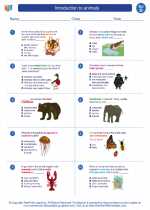 Introduction to animals
Introduction to animals  Worksheet/Answer key
Worksheet/Answer key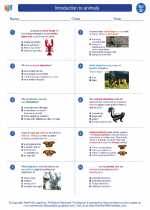 Introduction to animals
Introduction to animals  Worksheet/Answer key
Worksheet/Answer key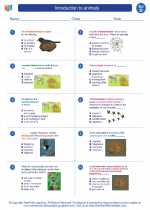 Introduction to animals
Introduction to animals  Vocabulary/Answer key
Vocabulary/Answer key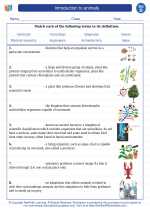 Introduction to animals
Introduction to animals  Vocabulary/Answer key
Vocabulary/Answer key Introduction to animals
Introduction to animals  Vocabulary/Answer key
Vocabulary/Answer key Introduction to animals
Introduction to animals  Vocabulary/Answer key
Vocabulary/Answer key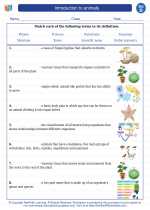 Introduction to animals
Introduction to animals 

 Worksheet/Answer key
Worksheet/Answer key
 Worksheet/Answer key
Worksheet/Answer key
 Worksheet/Answer key
Worksheet/Answer key
 Vocabulary/Answer key
Vocabulary/Answer key
 Vocabulary/Answer key
Vocabulary/Answer key
 Vocabulary/Answer key
Vocabulary/Answer key
 Vocabulary/Answer key
Vocabulary/Answer key

The resources above cover the following skills:
Concepts of Life Science (SC1, SC2, SC3)
The student demonstrates an understanding of how science explains changes in life forms over time, including genetics, heredity, the process of natural selection and biological evolution by showing the relationship between physical characteristics of Alaskan organisms and the environment in which they live.